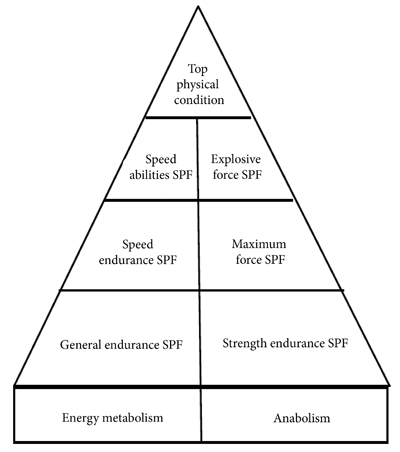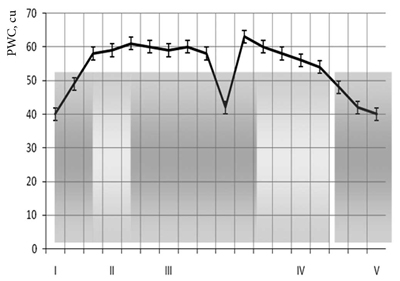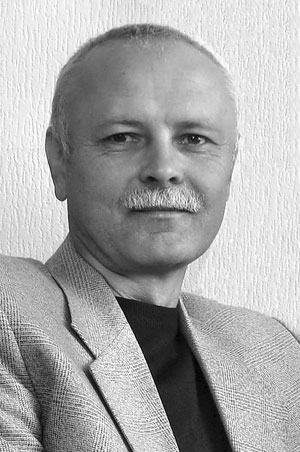Functional statuses in sport
Фотографии:
ˑ:
I.V. Levshin, Dr.Med.
A.S. Solodkov, professor, Dr.Med.
Y.M. Makarov, professor, Ph.D.
A.N. Polikarpochkin, Dr.Med.
Lesgaft national state university of physical culture, sport and health, St.Petersburg
Key words: status, functional status, physical work capacity, condition, fitness, sports form, functional gap.
The term “functional status” is a primary concept in the modern human science, especially popular in normal, sports and pathological physiology, psychophysiology and other fields of medicine [1, 6, 7, 8]. It estimates specific human body systems such as breathing, blood circulation, central nervous and digestive systems or human “functional status” in general. Most often the semantics of the indicated term is supposed to be common and clear for all. But if to look closer at this issue the lack of our knowledge on the body integrative performance and its control methods is revealed. Most of conducted researches give answers to individual issues of performance of specific systems.
The purpose of the study was to make a theoretical analysis of the modern concepts “functional status” and give examples of its practical application in sport.
Numerous definitions and approaches to definition of the concept “functional status” indicate to the unsettled methodological problem when estimating body performance as an integral system. It is to be noted that the term “functional status” can be admitted as the most abstract category and physiologists got used to specific terms with an exact structural-functional view of the body. Unfortunately, it is also difficult to understand the essence of the term translated into English and other foreign languages. This situation is most common in the fields of sports physiology and medicine, when sports experts use the term “condition” more frequently when characterizing athlete’s functional status. Virtually, these two interpretations become synonyms in this case.
The interpretation of the term “status” is referred to metanotions but not to physiological categories along with the terms “function”, “system”, “process”, “characteristic” etc. In physics and other natural sciences “status” is an instantaneous characteristic of an object, the most general and indefinable notion. The variety of time changes in the object’s status is designated as a process. “Characteristic” means external manifestations of the system status, permanent in time [3], generally, it is first of all characteristic of existence of objects and phenomena, realization of objective reality in this and next instants of time. Consequently, K.P. Vorob’ev [2] assumes that the physiological interpretation of “functional status” is rather contradictory in view of dialectics, for the question is оn a function as a dynamic process and on a static characteristic of a living system at the same time. Namely, the case is on continuous-discreet characteristics of the living system at its interaction with the environment. It follows from the foregoing that “functional status” is an integral characteristic of health, reflecting body adaptabilities and is estimated by the data on the current changes of functions and structures influenced by the environmental factors.
It should be noted that in psychology “status” means some intrinsic characteristic of human psyche, a relatively permanent in time part of the mental process (incredible as it may seem). A state undergoes along with the process originating it (emotional, for example), whereas a psychological attribute is an external, constant system characteristic, considered without notice of time.
According to V.I. Medvedev [7], any functional status is a product of body involved in specific activity presupposing its transformation within it. So the definition he puts forward is as follows: “Functional status is determined as an integral dynamic set of available characteristics of individual functions and qualities directly or indirectly stipulating performance of actions” [4].
For justice’ sake, it is to be marked that the first, the most correct definition of the functional status from the medicobiological view was suggested by V.L. Marischuk [6]. All further definitions of this concept (V.I. Medvedev, I.A. Sapov, A.S. Solodkov, V.I. Kuleshov, E.P. Il’in et al.) only specify and supplement this term.
Functional status represents first of all physiological statuses of a body and its systems. Any status is functional, meaning that it reflects a body performance level in general or its systems in particular and adapts itself to given living conditions. So we can agree with E.F. Trifonov [9] on the fact that, actually, the definition “functional” does not supplement the essence of the concept “status” and is unnecessary.
All the adduced definitions have the same logical framework, where status is defined as a combination or a symptom group of different characteristics, processes, features or qualities, stipulating system performance level, efficiency of activity and behavior. The word “status” itself defines a relative duration of current processes – a restorative constituent of activity. The term “status” conditioning human activity is a system notion. Above all, it is an aggregate of three components: 1. Body’s internal environment; 2. External environment, including social one; 3. Factors of activity.
In sport athlete’s functional status is a key criterion promoting his achievement of ultimate sports results or failures in it. Athlete’s functional status can be optimized using a conditioning training system. The latter means training athletes to the optimum ratio of energy and constructive (structural) constituents of body adaptation to peak loads. E.R. Yakhontov suggests considering training meant for increase of the level of athletes’ functional status (condition) as a pyramid or ascending it step by step (Fig. 1) [10].
An athlete training in the strict sequence with the pyramid and proceeding gradually from one step of the pyramid to another is assumed to facilitate obtaining of the top physical condition.

Fig. 1. Conditioning training pyramid.
The left part of the pyramid is intended for development of energy potential determined by efficiency of energy metabolism. Energy metabolism is being improved in the course of the conditioning training and is aimed mainly at enhancement of athletes’ body capabilities, namely, increase of the general fitness level. Another part of the pyramid shows anabolism expressed in development of explosive force and is associated with the use of speed and strength exercises when training. The use of strength exercises in trainings is supposed to develop first strength endurance and then maximum force and ultimately – explosive force. This sequence promotes achievement of the top fitness level experts call special fitness. In fact, as shown on the adduced scheme, there is no big difference between general and special fitness, but the top level of functional status is made of energy and constructive (structural) constituents. In view of the above said, we believe the psychological component is to supplement the full estimation of the functional status. So it is more relevant to describe the subjected components of the functional status by the set of three acute constituents: 1. morphological (constructive, structural), 2. functional and 3. psychological. An optimum sports result can be achieved only in case of available all three constituents that can be adduced as a triad: I want – I can – I have skills for it.
The approach to interpretation, estimation and optimization of the functional status in sport testifies to the fact that the basic elementary structures or components of the functional status are functions and processes of different levels such as physiological, psychological and behavioral. At the physiological level the structures ensuring motor and vegetative components of a status are of special importance; at mental – status is described by the characteristics of the basic mental processes; for behavioral level quantitative and quality characteristics of activity and specifics of its realization are the leading. Functional status is formed thanks to the co-performance of the listed components, so specific manifestations of activity of single elementary structures are always interdependent.
Functional status depends on the kind of activity and defines it. In general, body functional status is shown in vegetative (energy or ensuring performance level), somatic or muscle (implementation performance level) and psychological (controlling performance level) fields of activity. Here the vegetative activation level, namely energy field of activity, reflects the extent of use of body reserves.
Statuses are very diverse. Every status has its key characteristic, the primary cause of other single characteristics of this status and its general specifics. Functional status, seen as a body’s system response, is stable enough, admitting rotation of characteristics of single functions within limits in case of maintained interaction of these functions. Therefore, not every deviation of function characteristics indicates to changes in the functional status. Qualitative changes of the functional status can be revealed only by available data on dynamics of effective performance, which is the function a body can perform as a uniform system [4, 7]. Otherwise, even marked fluctuations of single characteristics can indicate only to a balance shift in the system status. But the arising shift is a signal: even minor fluctuations of characteristics in very unbalanced systems can be significantly intensified and cause a destruction of the functional status [4].
Results and discussion. When analyzing the options of transformation and types of functional statuses related to activity, two classes of possible positions are allocated: the state of complete adequacy of the system, every part is optimum and in strict correspondence with activity requirements; the state of dynamic disagreement, when the system ensures activity incompletely or works too hard. Functional statuses are classified in accordance with different pragmatic and informative criteria. A.A. Ukhtomsky suggested the status of efficient rest as such a model, intended to describe body’s overall fitness regardless of specific features of work. The types of functional statuses include optimal and nonoptimal; acute, chronic and borderline. The main qualitative specific classes are the statuses of optimum performance, fatigue, monotonia, physiological and mental stress in different forms, extremal states [4].
Generally, human functional statuses formed within performance can be characterized by two principle criteria of reliability and value of performance. Reliability means probability of achievement of set goals in the course of professional activity at set conditions. Value of performance is an amount of physiological and psychophysiological efforts ensuring performance of work at a set level. In view of the above said, differentiation of normal, transitional (borderline) and pathological statuses is one of the best ideas taking into account reliability and value of performance [8]. Here the authors call normal the functional statuses with maintained set performance level and its psychophysiological value is adequate to homeostatic parameters. Functional status is estimated by the indices of performance value in the aspect of fatigue and its final effect on human health. The due reliability of work is not ensured at pathological functional statuses and performance value exceeds homeostasis capabilities. Borderline functional statuses can be characterized by either reduced reliability of professional performance or inadequacy of its psychophysiological value.
In sports practice athlete’s fitness level is one of the primary functional statuses that in terms of physiology represents a process of development and enhancement of functional reserves of formation of motor skills based on conditioned and unconditioned reflexes.
Athlete’s status in the period of his top special fitness is called sports form. Sports form is obtained by strong 5-6-months long training loadings, so it can be on the top for not more than 3 months, but can occur several times within a year. Trainings are usually planned in such a way so that an athlete was in a top form during the season which sometimes provokes its sharp drop, which is called “functional gap”.
Physiological responses are analyzed using dozens and hundreds of various characteristics and methods. Certainly, all the methods cannot be applied in a single case. When settling the issue one is to proceed from two principles.
The first one presupposes selection of the characteristic giving the best description of the functional status of the studied system, namely, which is adequate to the work the system is to perform. The second principle is associated with the idea that any system is versatile in manifestation of its activity and its features. When a status is being developed the system features change in different ways. It is rather complicated to define the primary aspect of the system activity.
Estimation of the functional status and physical work capacity (PWC) of players of the female basketball team during preseason, regular season, postseason and off-season periods in the course of the year exemplifies the use of the above mentioned principles in practice. It was an indirect monitoring of psycho- and clinicophysiological characteristics and estimated integral index of PWC for female athletes, presented in conditional units. The studies were repeatable every 2 weeks to one month depending on the team schedule. The subjects examined totaled to 10 female players. The data received and PWC values of the subjects revealed the PWC dynamics within the preseason and the season for 2005-2006 (Fig. 2)
According to the data adduced on Fig. 2 the PWC index for the preseason training session increases in dynamics from 40±0,8 to 56±0,9 cu in the basketball teams. Trainings become less intensive in preseason but PWC is growing to reach up to 62±0,8 cu. The direction of the training process changes to improvement of speed and strength qualities with the overall direction of training substituted to special exercises adapted for basketball.

Fig. 2. Integral index of PWC of female basketball team during preseason and regular season; n=10.
Key: I – preseason training sessions; II – preseason; III – regular season; IV – postseason; V – offseason.
Season takes much more time compared to pre-season and is characterized by minor fluctuations of the integral index of PWC. In specific short time periods its characteristics can decrease to 43,5±0,8 cu. We believe the dynamics in such a direction is caused by the start of formation and possible appearance of the “functional gap”. In sports practice such statuses require correction of the athlete’s functional status in cooperation with a doctor in sports medicine. In some part of the season team or a single athlete can be in top form with body reserves mobilized to the maximum and a rise of the functional status and PWC. Such athletes’ status has not been marked in the present study.
Conclusions. The PWC of the club basketball players during pre-season and season can differ significantly from the initial state. Such variance is stipulated by intensity of training process, players’ body functional status, short- and long-term goals and objects trainer, team and players face, as well as by many other factors. Accurate construction of the training process, good medical support of competitive activity and avoidance of inadequate physical loadings must ensure being in top form and avoiding of the functional gap.
Thus, the concept “functional status” is one of the most integral characteristics of human body, his health, body reserves, characterizing success of body functional systems and acting as a key factor stipulating success and efficiency of sports, cognitive and communicative activities, largely ensuring the quality of specific activity. Correct practical application of the concept “functional status” is very important, since at certain phases of activity tactics and strategy of behavior should be based on absolutely different principles. Defining functional status researcher forms a most likely forecast and estimates the chance of achievement of sports results.
References
- Balsevich, V.K. Health in movement / V.K. Balsevich. - Moscow: Fizkultura i sport, 2005. – 102 P. (In Russian)
- Vorob’ev, K.P. Clinicophysiological analysis of categories of body’s functional status in intensive care / K.P. Vorob’ev // Vestnik intensivnoy terapii. - 2001. - № 2. - P. 3-8. (In Russian)
- Druzhinin, V.N. Foreword. Mental statuses / V.N. Druzhinin // (Reader). Comp. and ed. by L.V. Kulikov. - St.Petersburg: Piter, 2000. – 512 P. (In Russian)
- Leonova, A.B. Human functional statuses in labour activity / A.B. Leonova, V.I. Medvedev // Study guide. - Moscow: Publ. h-se MSU, 1981. – 111 P. (In Russian)
- Lubysheva, L.I. Sociology of physical culture and sport: study guide for students of higher ed. institutions / L.I. Lubysheva. – 3rd ed., rev. and sup. - Moscow: Academia, 2010. - 272 P. (In Russian)
- Marischuk, V.L. Functional statuses and physical work capacity / V.L. Marischuk // Methodology of research on human engineering and labour psychology. P.1 / Ed. by A.A. Krylov. - Leningrad, 1974. - P. 87-95. (In Russian)
- Medvedev, V.I. Functional statuses of the man who works / V.I. Medvedev // Ergonomics: principles and recommendations. Study guide. - Moscow: ARRITA, 1981. P. 43-60. (In Russian)
- Solodkov, A.S. Athletes’ functional statuses and ways to restore them / A.S. Solodkov. - St.Petersburg: LSPbSAPC, 2001. - 34 P. (In Russian)
- Trifonov, E.V. Psychophysiology of professional activity: Dictionary / E.V. Trifonov. - St.Petersburg, 1996. - P. 224. (In Russian)
- Yakhontov, E.R. Individual training of basketball players / E.R. Yakhontov. – Leningrad: 1998. – 47 P. (In Russian)
Author’s contacts: levshin07@gmail.com


